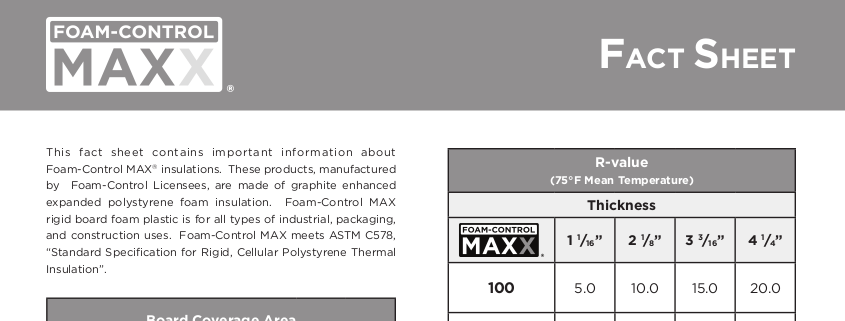Discover the Best Practices for Effective Foam Control in Industrial Applications
Discover the Best Practices for Effective Foam Control in Industrial Applications
Blog Article
Reliable Techniques for Accomplishing Optimum Foam Control in Chemical Manufacturing
Effective foam control is an important element of chemical manufacturing that can considerably impact production efficiency and product quality. By recognizing the mechanisms of foam development and choosing suitable anti-foaming agents, makers can take proactive actions to alleviate too much foam.
Understanding Foam Development

Surfactants, or surface-active agents, minimize the surface stress of the fluid, promoting bubble stability and promoting foam generation. In addition, frustration or mixing processes can boost bubble development, usually worsening foam concerns. The attributes of the fluid medium, including thickness and thickness, additional impact foam habits; for instance, more thick fluids often tend to trap air extra properly, leading to enhanced foam security.
Comprehending these basic elements of foam development is crucial for effective foam control in chemical production. By acknowledging the problems that promote foam advancement, manufacturers can implement targeted techniques to alleviate its damaging impacts, thereby enhancing production processes and guaranteeing constant item high quality. This foundational understanding is essential before discovering details approaches for controlling foam in commercial settings.
Option of Anti-Foaming Agents
When choosing anti-foaming representatives, it is necessary to consider the specific characteristics of the chemical process and the sort of foam being created (Foam Control). Numerous aspects affect the efficiency of an anti-foaming agent, including its chemical make-up, temperature level stability, and compatibility with other procedure products
Silicone-based anti-foams are commonly used as a result of their high efficiency and wide temperature level range. They work by minimizing surface stress, permitting the foam bubbles to coalesce and break even more easily. They may not be ideal for all applications, particularly those entailing sensitive solutions where silicone contamination is a problem.
On the other hand, non-silicone agents, such as mineral oils or organic compounds, can be beneficial in details situations, especially when silicone deposits are unwanted. These representatives tend to be much less reliable at higher temperatures but can provide reliable foam control in other conditions.
Additionally, comprehending the foam's beginning-- whether it occurs from oygenation, anxiety, or chemical reactions-- overviews the choice procedure. Examining under actual operating conditions is critical to guarantee that the chosen anti-foaming agent satisfies the one-of-a-kind needs of the chemical manufacturing procedure efficiently.
Process Optimization Strategies
Efficient foam control is a crucial element of maximizing chemical manufacturing procedures. By fine-tuning these criteria, operators can lower turbulence, consequently minimizing foam formation during mixing.
Furthermore, managing temperature and pressure within the system can substantially affect foam generation. Decreasing the temperature may minimize the volatility of particular parts, resulting in reduced foam. Likewise, keeping optimum stress degrees helps in alleviating excessive gas release, which adds to foam security (Foam Control).
One more effective method is the calculated enhancement of anti-foaming agents at important phases of the procedure. Cautious timing and dose can make sure that these agents effectively suppress foam without disrupting various other procedure criteria.
Moreover, integrating a methodical assessment of raw material properties can help recognize naturally lathering substances, permitting preemptive measures. Last but not least, visit the website performing routine audits and process reviews can reveal ineffectiveness and areas for improvement, allowing constant optimization of foam control strategies.
Tracking and Control Equipment
Tracking and control systems play an essential duty in preserving optimal foam management throughout the chemical production process. These systems are important for real-time monitoring and modification of foam degrees, making sure that production performance is optimized while reducing disturbances brought on by excessive foam development.
Advanced sensors and instrumentation are utilized to detect foam thickness and elevation, offering essential data that educates control algorithms. This data-driven technique permits the timely application of antifoaming representatives, guaranteeing that foam degrees continue to be within acceptable limitations. By incorporating surveillance systems with procedure control software program, producers can carry out computerized reactions to foam variations, reducing the requirement for hands-on treatment and enhancing operational uniformity.
In addition, the integration of artificial intelligence and predictive analytics into keeping track of systems can promote aggressive foam management. By evaluating historic foam information and functional criteria, these systems can anticipate foam generation patterns and advise preemptive measures. Regular calibration and maintenance of tracking devices are important to ensure accuracy and reliability in foam detection.
Ultimately, effective monitoring and control systems are important for optimizing foam control, promoting safety and security, and improving overall productivity in chemical manufacturing settings.

Case Research Studies and Finest Practices
Real-world applications of monitoring and control systems highlight the significance of foam administration in chemical production. A remarkable study includes a massive pharmaceutical maker that carried Go Here out an automated foam discovery system. By incorporating real-time surveillance with predictive analytics, the facility decreased foam-related production downtime by 30%. The data-driven method enabled for timely interventions, guaranteeing constant product high quality and functional efficiency.
Another excellent instance comes from a petrochemical business that adopted a mix of antifoam representatives and process optimization methods. By examining foam generation patterns, the organization customized its antifoam dose, leading to a 25% reduction in chemical use and substantial expense savings. This targeted technique not only reduced foam interference however additionally boosted the general stability of the production procedure.

Final Thought
In final thought, attaining ideal foam control in chemical manufacturing demands a detailed method encompassing the choice of appropriate anti-foaming representatives, application of process optimization strategies, and the combination of innovative tracking systems. Regular audits and training additionally enhance the performance of these techniques, cultivating a culture of continual enhancement. By addressing foam development proactively, manufacturers can substantially enhance manufacturing efficiency and product top quality, ultimately adding to more cost-effective and sustainable procedures.
By understanding the systems of foam formation and selecting proper anti-foaming agents, makers can take aggressive steps to click to investigate alleviate too much foam. The attributes of the fluid medium, including thickness and density, additional impact foam actions; for example, more viscous liquids often tend to trap air much more successfully, leading to raised foam stability.
Comprehending these basic facets of foam formation is important for efficient foam control in chemical production. By assessing historic foam data and operational parameters, these systems can forecast foam generation patterns and suggest preemptive procedures. Foam Control. Normal audits of foam control gauges ensure that processes remain optimized, while fostering a culture of proactive foam administration can lead to sustainable enhancements throughout the production range
Report this page